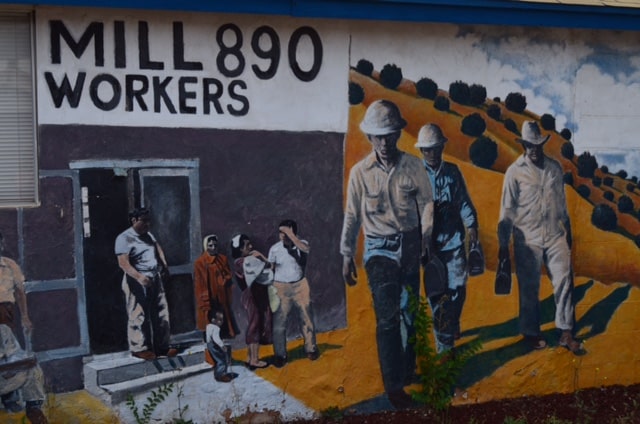Set in “Zinctown, N.M.,” Salt of the Earth uses a combination of actors and nonprofessional community people to tell a great story. Sparked by a mine accident, the workers, mostly Mexican Americans, go on strike. Safety is the issue, but is inextricably linked with racial discrimination as Anglo miners work in pairs, while Mexican Americans are forced to work alone.
The film consistently highlights the racial dimension to the class struggle. One of the white managers says about the workers: “They’re like children in many ways. Sometimes you have to humor them. Sometimes you have to spank them. And sometimes you have to take their food away.”
The film also addresses racism within the union. The white organizer from the international union is committed to the workers’ cause and to union democracy, but his paternalism still creeps in. He is criticized by one of the workers, Ramon Quintero: “When you figure everything the rank and file’s to do down to the last detail, you don’t give us anything to think about. Are you afraid we’re too lazy to take initiative?”
This is especially a feminist story, as women insist that their issues for indoor plumbing and hot water in the company-owned housing be included as a demand of the all-male union. This is the women’s story at least as much as the men’s, and they continue to push for equality the more they participate in strike activities. This struggle comes to a head as Esperanza confronts her husband, Ramon, about his determination to keep her in her place:
Have you learned nothing from this strike? Why are you afraid to have me at your side?
Do you still think you can have dignity only if I have none?
Do you feel better having someone lower than you? Whose neck shall I stand on to make me feel superior?
I want to rise and push everything up as I go.
As effectively as any other film in my curriculum, Salt of the Earth celebrates the possibility of people being able to create a very different, very much better society through solidarity and collective action.
When I first showed Salt of the Earth a number of years ago, I worried that students would be put off by a black and white film that had quite a bit of amateurish acting and melodramatic music. I was wrong. What the film lacks in polish it more than makes up for in substance. And most students recognize that. [Description by Bill Bigelow from Rethinking Schools.]
View Salt of the Earth or download free online at Internet Archive. (Film is in public domain.) Salt of the Earth was one of 100 films chosen by the Library of Congress to be preserved for posterity. It was also banned at the time of its release during the McCarthy era.











Twitter
Google plus
LinkedIn